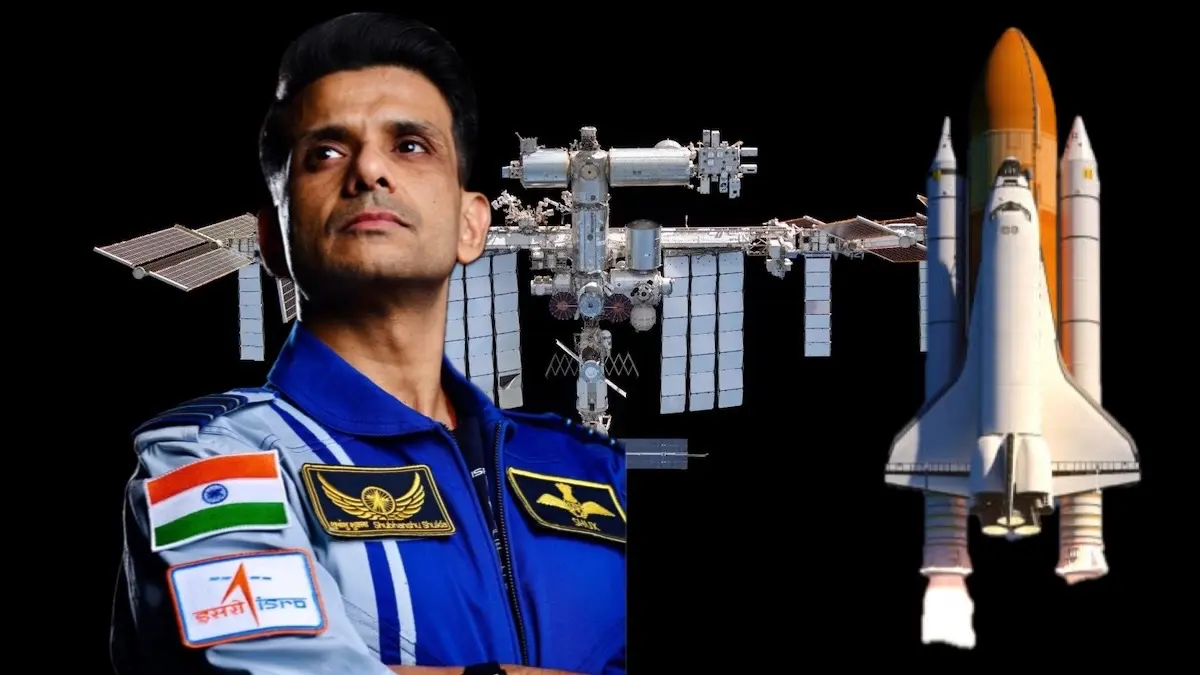Now Reading: Shubhanshu Shukla Set To Take First Steps For India’s Gaganyaan Mission: A Dream Envisioned By Vikram Sarabhai
-
01
Shubhanshu Shukla Set To Take First Steps For India’s Gaganyaan Mission: A Dream Envisioned By Vikram Sarabhai
Shubhanshu Shukla Set To Take First Steps For India’s Gaganyaan Mission: A Dream Envisioned By Vikram Sarabhai


IAF Group Captain Shubhanshu Shukla set to fly to International Space Station as part of AXIOM 4 Mission. | Image:
File photo
Florida: Shubhanshu Shukla is set to make history as the first Indian on the International Space Station (ISS). As pilot of the Axiom-4 mission, his SpaceX Dragon spacecraft is scheduled to dock on June 11 at 10 PM IST, after launching on June 10 at 5:52 PM IST with a crew including Peggy Whitson, Slawosz Uznanski-Wisniewski, and Tibor Kapu. The mission aims to conduct 60 experiments, with Shukla participating in five NASA human research projects and seven organised by ISRO. Lucknow-born Shukla described the Axiom-4 mission as “larger than self,” expressing his fortune to be part of such a significant endeavour.
Shubhanshu Shukla’s Axiom Mission 4 to the ISS marks a significant leap for ISRO, making him the first Indian astronaut to visit the ISS and only the second Indian in space since 1984.
As pilot of this 14-day private spaceflight, a collaboration between ISRO, NASA, and Axiom Space, Shukla will conduct experiments and enhance India’s human spaceflight expertise.
He is also an astronaut-designate for the Gaganyaan manned mission (2026), India’s first human spaceflight program.
Gaganyaan aims to send 2-3 Indian astronauts into low Earth orbit for a 3-day mission, making India the fourth nation to independently launch humans into space.
The program has an expanded budget of 201.93 billion rupees ($2.32 billion) and includes initial work on a national space station.
The Gaganyaan mission is poised to determine India’s power in the next decade by demonstrating its capability to develop complex technologies for human spaceflight, including life support systems, crew escape systems, and human-rated launch vehicles (HLVM3).
Geopolitically and strategically, the Gaganyaan mission aligns with India’s ambition to be a major player in the global space race, as seen in its Artemis Accords membership (2023).
It strengthens India’s role in international space competition, particularly with China, which operates the Tiangong space station.
Economically, the mission involves over 300 Indian industries, boosting sectors like aerospace, electronics, and materials science.
Its $2.32 billion full mission budget is significantly lower than comparable programs like China’s Shenzhou launch at $2.62 billion, reinforcing ISRO’s cost-effective model.
Diplomatically, Gaganyaan strengthens India’s space diplomacy through partnerships with NASA, ESA, and Axiom Space, enhancing global credibility and cooperation.
The Gaganyaan mission is also the first step towards building India’s own orbital space station, named Bhartiya Antriksh Station (BAS), by 2035.
Initial work on BAS has begun, with the PSLV-C60 mission in December 2024 testing docking technology via the Space Docking Experiment (SpaDeX), which is critical for assembling the space station. India plans to establish a national space station, with two crewed and six uncrewed missions by 2028.
ISRO has earned a reputation for cost-effectiveness and excellence. For instance, the Chandrayaan-3 Mission succeeded at a cost of $75 million, significantly less than Russia’s Luna-25 ($133 million) and NASA’s Artemis I ($4.1 billion for an uncrewed mission).
Similarly, ISRO’s Mars orbiter, Mangalyaan, cost just $74 million, far less than NASA’s Maven ($582 million).
The Aditya-L1 probe, at $46 million, was also considerably cheaper than NASA’s Parker Solar Probe ($1.5 billion) and ESA’s Solar Orbiter ($1.5 billion).
Experts attribute these lower costs to ISRO’s in-house manufacturing and testing. Their PSLV rocket also offers an average launch cost of about $25 million, which is more economical than SpaceX Falcon 9 ($62 million) and China’s Long March 5 ($70 million).
India’s space program, led by ISRO, has earned it a place among an elite group of nations with advanced space capabilities.
India became the first nation to soft-land on the Moon’s south pole with Chandrayaan-3 in 2023. India was also the first nation globally to succeed in reaching Mars orbit on its first attempt with the Mars Orbiter Mission (MOM). On December 30, 2024, ISRO’s SpaDeX mission successfully demonstrated spacecraft rendezvous, docking, and undocking, making India one of only four nations (USA, Russia, China) capable of space docking.
Chandrayaan-1, India’s first lunar mission, confirmed the presence of water molecules in the lunar soil, providing the first direct evidence of water on the Moon.
The Gaganyaan mission is on track to make India the fourth nation after the USA, Russia, and China to independently launch humans into space.
Additionally, India’s Navigation with Indian Constellation (NavIC) system, fully operational in 2018, makes India one of only five entities with an operational regional/global satellite navigation system.
Under the Modi government, ISRO’s budget has nearly tripled from ₹5,615 crore in 2013-14 to ₹13,416 crore in 2025-26. Between 2015 and 2024, ISRO launched 393 foreign satellites for 34 countries, earning approximately $143 million and €272 million.
On February 15, 2022, ISRO set a world record by launching 104 satellites in a single PSLV-C37 mission.
The Indian space sector is projected to grow from $8 billion to $44 billion by 2033, with private startups playing a key role, supported by a ₹1,000 crore venture capital fund.
Shubhanshu Shukla’s historic mission to the ISS and the ambitious Gaganyaan program exemplify India’s rapidly ascending trajectory in space exploration, building upon ISRO’s legacy of cost-effective excellence and groundbreaking achievements.
From being the first to reach Mars orbit on its maiden attempt to pioneering space docking and the discovery of water on the Moon, India has truly cemented its place in the elite “space club”.
This progress, further bolstered by increased government funding and a burgeoning private space sector, is not merely about technological prowess but about addressing societal challenges and fostering national development.
As the visionary Dr. Vikram Sarabhai, the father of India’s space program, famously stated, “There are some who question the relevance of space activities in a developing nation. To us, there is no ambiguity of purpose. We are convinced that if we are to play a meaningful role nationally, and in the community of nations, we must be second to none in the application of advanced technologies to the real problems of man and society.”
India’s journey into space is a testament to this enduring vision, demonstrating how innovation can be a powerful tool for national progress and global collaboration.























